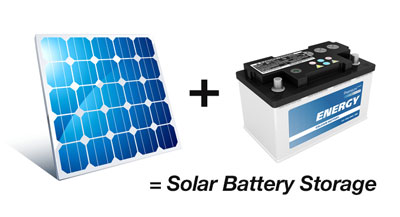Battery storage* in perspective – solving 1% of the problem
 The energy world is fixated on the “huge” amounts of battery storage presently being installed to back up slowly-increasing levels of intermittent renewables generation. The feeling seems to be that as soon as enough batteries are installed to take care of daily supply/demand imbalances we will no longer need conventional dispatchable energy – solar + wind + storage will be able to do it all. Here I take another look at the realities of the situation using what I hope are some telling visual examples of what battery storage will actually do for us. As discussed in previous posts it will get us no closer to the vision of a 100% renewables-powered world than we are now.
The energy world is fixated on the “huge” amounts of battery storage presently being installed to back up slowly-increasing levels of intermittent renewables generation. The feeling seems to be that as soon as enough batteries are installed to take care of daily supply/demand imbalances we will no longer need conventional dispatchable energy – solar + wind + storage will be able to do it all. Here I take another look at the realities of the situation using what I hope are some telling visual examples of what battery storage will actually do for us. As discussed in previous posts it will get us no closer to the vision of a 100% renewables-powered world than we are now.
*Note: “Battery storage” covers all storage technologies currently being considered, including thermal, compressed air, pumped hydro etc. Batteries are, however, the flavor of the moment and are expected to capture the largest share of the future energy storage market.
This post is all about the difference between pipe dreams and reality. Prof. Mark Jacobson of Stanford University et al. have just published a new study that responds to the critics of their earlier 2017 study. The new study is paywalled, but Stanford’s press release describes the basic procedures used:
For the study, the researchers relied on two computational modeling programs. The first program predicted global weather patterns from 2050 to 2054. From this, they further predicted the amount of energy that could be produced from weather-related energy sources like onshore and offshore wind turbines, solar photovoltaics on rooftops and in power plants, concentrated solar power plants and solar thermal plants over time. These types of energy sources are variable and don’t necessarily produce energy when demand is highest.
…click on the above link to read the rest of the article…